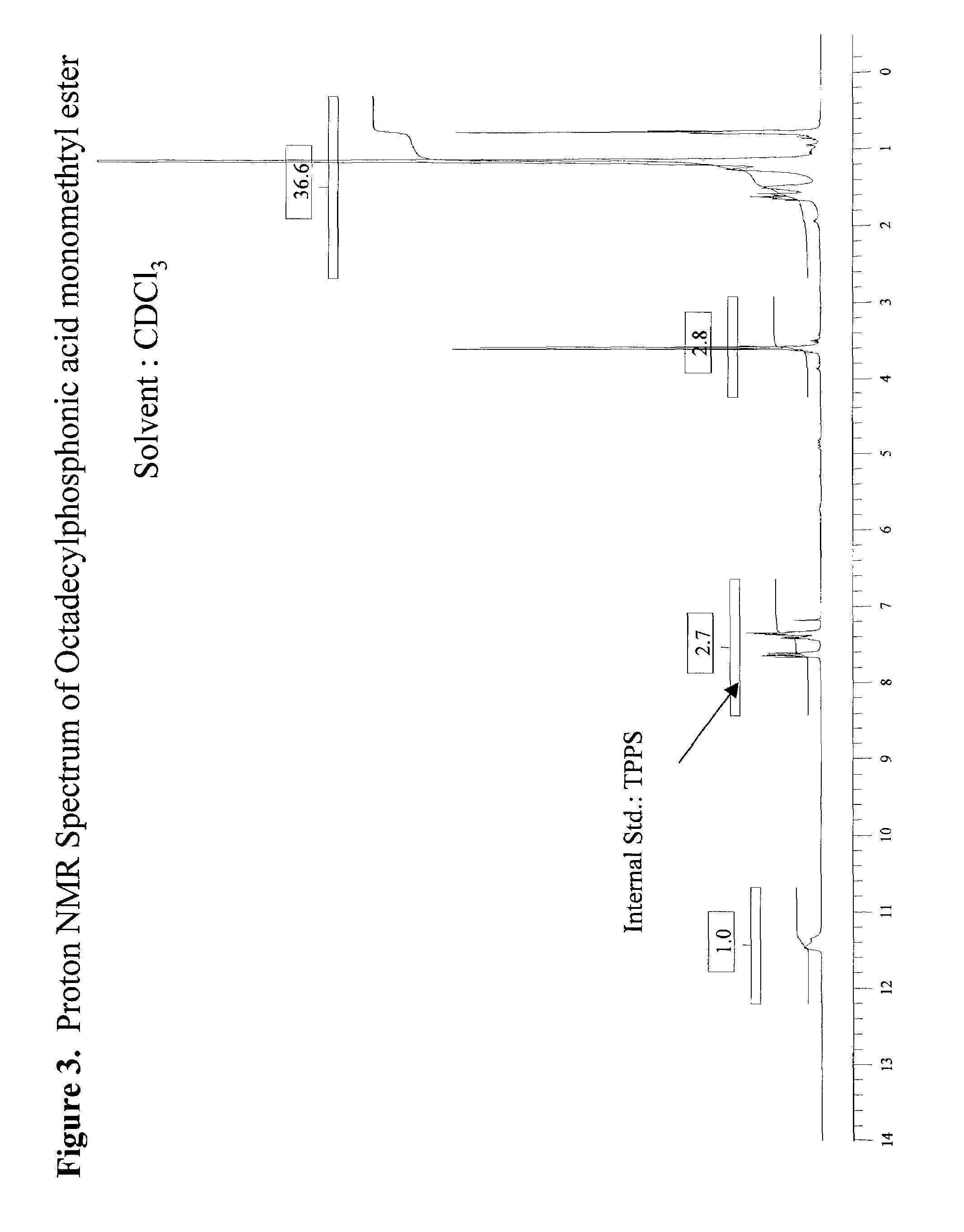Process for manufacturing alkylphosphonate monoesters
- Summary
- Abstract
- Description
- Claims
- Application Information
AI Technical Summary
Benefits of technology
Problems solved by technology
Method used
Image
Examples
example
[0049]307 g of dimethyl octadecylphosphonate (DMOP), 172 g H2O, and 184 g n-propyl alcohol were charged into a 2 liter round bottomed flask equipped with a condensor, thermocouple probe, and a mechanical stirrer. To this stirred solution was added 44.0 g sodium hydroxide (NaOH) in one portion at 70° C. After the initial exotherm subsided, the stirred mixture was heated to maintain a fast reflux (87° C.) for 3 hours. The clear deep yellow solution was cooled to 65° C. and diluted with 260 mL of heptane. The stirred solution containing phosphonic acid sodium salt was acidified (pH=3–3.5) with 20% H2SO4. After 5 min of vigorous stirring the mixture was allowed to separate into liquid layers. The dense aqueous layer was drawn through a stopcock at the bottom of the reaction flask. The organic layer in the flask was separated from the solvent by vacuum distillation (25–28 mm Hg) to leave a dense liquid residue at 125° C. The dense liquid residue was poured out of the flask. The product w...
PUM
 Login to View More
Login to View More Abstract
Description
Claims
Application Information
 Login to View More
Login to View More - R&D
- Intellectual Property
- Life Sciences
- Materials
- Tech Scout
- Unparalleled Data Quality
- Higher Quality Content
- 60% Fewer Hallucinations
Browse by: Latest US Patents, China's latest patents, Technical Efficacy Thesaurus, Application Domain, Technology Topic, Popular Technical Reports.
© 2025 PatSnap. All rights reserved.Legal|Privacy policy|Modern Slavery Act Transparency Statement|Sitemap|About US| Contact US: help@patsnap.com



